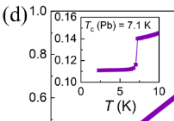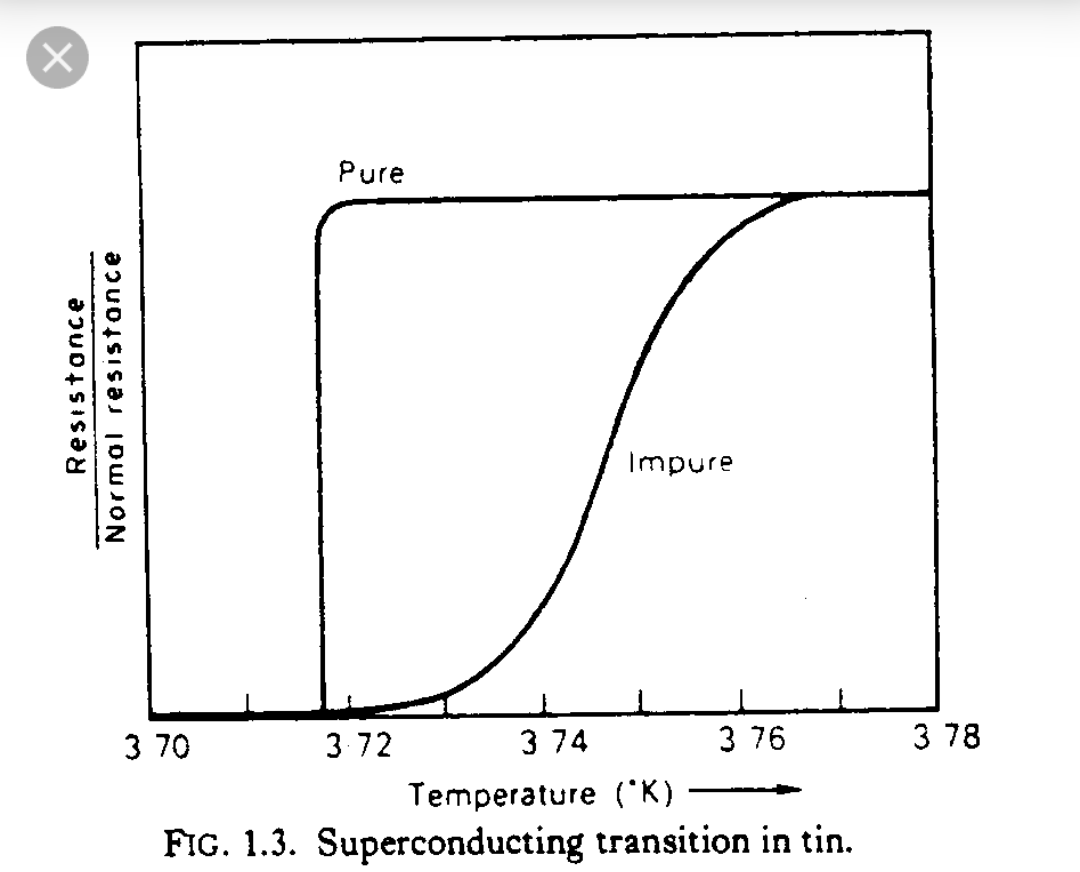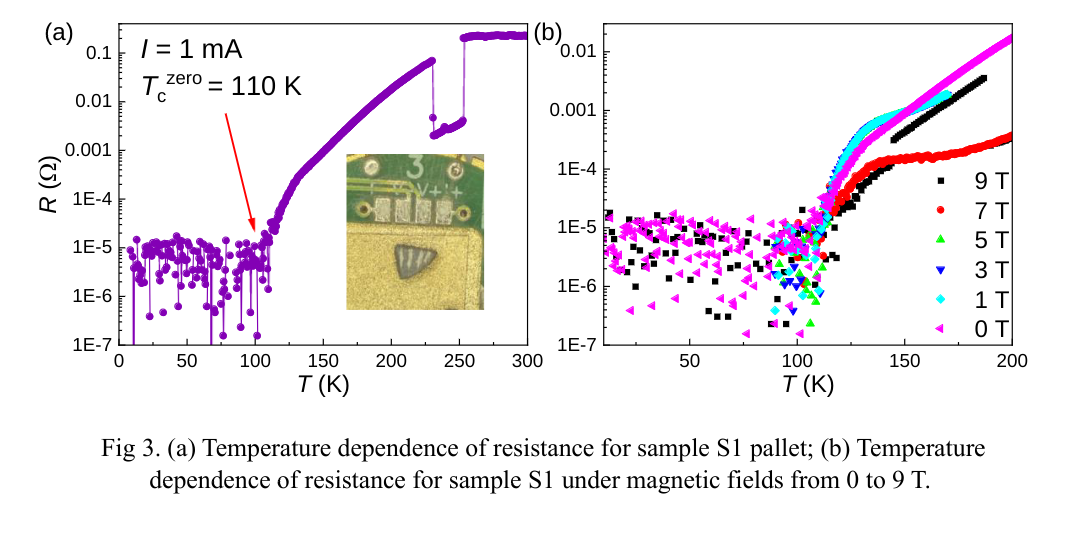Resolves YES if credible evidence establishes that LK-99 is a superconductor, and that evidence is sufficient to create a consensus view among physicists.
This does not require the material to be a room temperature, ambient pressure superconductor. A demonstration of superconductivity at any temperature and pressure will be sufficient for a YES resolution.
"Superconducting" means whatever physicists understand it to mean at that time, but is generally is expected to involve vanishing DC resistivity, a phase change, and expulsion of all internal magnetic fields. If LK-99 modifies physicists' view of what superconductivity is about, market resolution will account for these modifications rather than apply the current understanding.
Evidence will ideally be in the form of peer-reviewed studies in reputable scientific journals, but other high-quality evidence may be sufficient. Initial evidence from individual sources is not sufficient to resolve YES, it needs to be enough to create a consensus, so resolution will wait to see replications, and broad commentary from physicists in the field regarding its credibility.
Resolves NO at end of 2024 if no such evidence is forthcoming, though I reserve the right to extend the market close date if it appears that recent serious evidence is under active scrutiny at that time.
🏅 Top traders
| # | Name | Total profit |
|---|---|---|
| 1 | Ṁ8,250 | |
| 2 | Ṁ600 | |
| 3 | Ṁ325 | |
| 4 | Ṁ254 | |
| 5 | Ṁ254 |
People are also trading
@MartinRandall no, not unless that evidence establishes that I misresolved it according to information available before market close.
Interesting idea though. Markets that pay out but can be reversed if the unlikely thing happens later.
@chrisjbillington Seems potentially misleading to have a market "is X true" that can resolve NO in cases where X is true.
@MartinRandall Potentially, but pretty par for the course for Manifold.
I wonder if question metadata like this could be built into manifold so that we didn't have to write awkward titles to include such info at the top level. I like simple titles, and it's messy for so many dates to be in titles when they're just a necessary evil of having to resolve sometime and often not fundamental to the question being asked, and usually redundant with the close date.
Something like a checkbox "resolves on evidence available before market close" that would include some marker near the top of the resolution criteria, making this aspect of specifying resolution criteria consistent across questions.
Some standardisation for at/by/before ambiguities would be nice too. Increases the complexity of making questions though.
@chrisjbillington Fair. I see that it's "end of 2024", with an option for an extension, and I think it's reasonable to think that this will get resolved "correctly" in that case.
To confirm, if
/QuantumObserver/will-the-lk99-room-temp-ambient-pre
legitimately resolves YES, then this should also resolve YES?
@MartinRandall Yes, this market should be treated as identical to that one, except without the requirement that the superconductivity be at room temperature and pressure. If the main LK-99 market (legitimately) resolves YES, so will this one.
https://arxiv.org/abs/2308.05778
"Notably, the superconducting transition originating from Pb at
approximately 7.1 K has also been detected, as indicated in the inset of Fig. 3(d)." Lead is a Type I superconductor, and since this question asks about any temperature, I think it's pretty clear it resolves yes.

@ErickBall I knew lead was a superconductor, but is lead-apatite doped with copper a superconductor? Interesting to see that they could observe this transition, but if it is due to incompletely-reacted elemental lead, I don't think that should count - If I'm reading correctly, pure lead-apatite doesn't contain elemental lead. If it is the actual copper-doped lead-apatite bit though, that definitely would count!
I guess we'll see which one it is!
Note that this question requires evidence strong enough to create a scientific consensus. The sort of thing that would have the LK-99 Wikipedia page say "LK-99 is a type I superconductor with a transition temperature of 7K". So it won't resolve off of this preprint alone - we'd need to see either more data that it's obvious would create a consensus, or to see some evidence of this preprint creating a consensus.
As it is, the paper appears to attribute the transition they do see to elemental lead, and the abstract says "we reached the conclusion that the presence of superconductivity in Cu-doped Apatite has yet to be substantiated" - indicating that the authors aren't claiming to have observed superconductivity (at any temp/pressure) in copper-doped lead-apatite.
Either they are treating elemental lead as an impurity that doesn't say anything about LK-99, or they didn't measure zero resistivity (it looks like the resistivity they measured below 7K is above the noise floor of their measurement), or more likely, both.
If this market comes down to debating whether impurities in the form of unreacted reagents that superconduct count as "LK-99 superconducts", then it's not a great situation since I don't think that should count and I'm a large holder in this market. In that case I may try to defer to trustworthy users to resolve on my behalf, including the possibility of resolving N/A.
I won't trade against the trade you just made at least until you've had a chance to sell given the above points, as that would be a dick move. But I may still trade in the future, so if you're thinking of selling, better to do so now!
@chrisjbillington ah, thank you, I had not noticed the part where they attribute it to elemental lead and thought they had shown the transition in the doped lead apatite. I agree with your reasoning above.
I'm very curious: for folks betting YES here and NO on the main LK-99 market, what is your model? What I've seen so far suggests that either LK-99 is superconducting at STP, or something else is happening (experimental error or strange novel properties) that doesn't indicate it's likely to be superconducting at a different temperature/pressure. Are you putting a lot of credence in the 110K paper linked below? Something else?
@jcb I don't think the original researchers know what they made or how they made what they made. I think they are on to something, and given a couple more years would have figured it out but one of them published early and now they are scrambling.
I put some credence in the 110k paper.
Preliminary evidence of superconductivity at 110K by Southeast University in China.
https://arxiv.org/abs/2308.01192
https://targum.video/v/2023/8/2/79065d85347d0a5dececb858f7e3acbd/
@SarkanyVar IIRC the graph of the resistance of that preprint (fig 3, second pic) has been criticised on Twitter for 1/ not showing the typical sudden drop in resistance of a pure SC or the sigmoid curve of impure SC samples (example as first pic) 2/ the artifact at high temperature bring indicative of a flaky contact setup not giving confidence in the whole measurement (why not fix and rerun for a clean, unimpeachable result?). Can't find the tweets on mobile, sorry, was that material science group one with the BW logo pp.


@CamillePerrin A second tweet has hit the preprint: from the cooling device plate, the size of the sample has been guesstimated. If the sample was a actually copper chunk (a conductor but not a super conductor) the resistivity of the conducting path would be about 5e-5, which is on the same order of magnitude as the noise displayed on the flat part of figure 3. Thus distinguishing between a conductor and superconductor might not be possible with this resistance measuring setup.
@CamillePerrin The main market only resolves YES if LK-99 is superconducting at room pressure and temperature, whereas this market resolves YES if superconductivity is demonstrated at all, at any pressure or temperature.
Edit: I've edited the title to emphasise this
